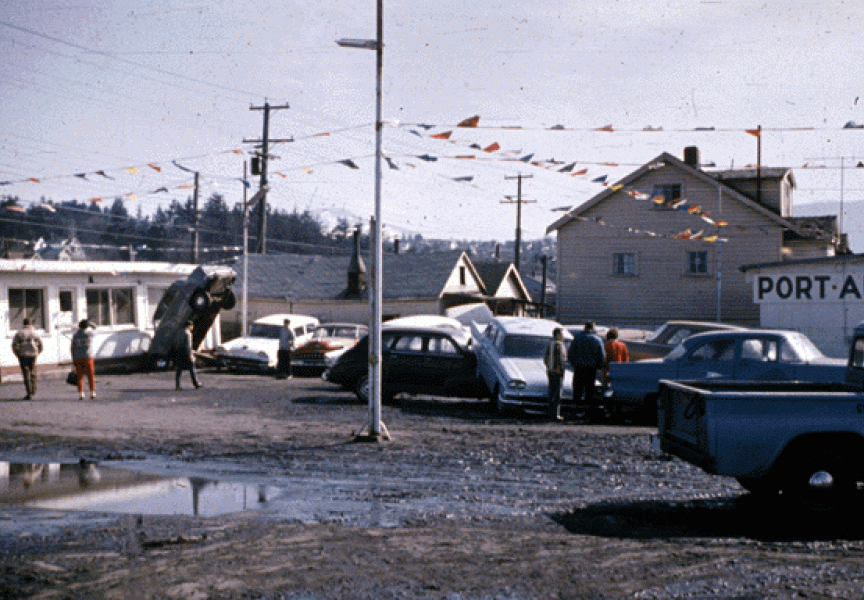Letter of response from Snuneymuxw First Nation
Attention: Bernie Dumas, President & CEO Nanaimo Port Authority
Dear Mr. Dumas:
I am writing in reply to your letter of December 7, 2012, regarding the Nanaimo Port Authority's (“NPA”) proposed 30 year lease of the marina in Nanaimo Harbour to the Pacific Northwest Marina Group.
Late last year, Snuneymuxw announced that it was launching an action strategy to repair the gross wrongs done to Snuneymuxw waters, including Nanaimo Harbour and the Nanaimo River Estuary. A major reason for this devastation has been the actions of the NPA.
Snuneymuxw's strategy includes ensuring that actions that are taken within the Harbour and Estuary are consistent with the Treaty of 1854 as required at law. As part of this strategy we have undertaken a careful review of the Canada Marine Act and the NPA's Letters Patent as they relate to the Treaty of 1854. We are of the view that the NPA is not in a proper legal position to pursue the lease in the manner that it has been, and more broadly that the NPA's asserted authority with regard to the waters and fisheries governed by the Treaty of 1854 is questionable. In addition, the specific course of conduct the NPA and PNMG has followed with respect to the proposed lease does not meet required legal standards.
(1) The NPA's Questionable Asserted Authority
The NPA's mandate, which is granted pursuant to its Letters Patent and the Canada Marine Act, is at all times subject to the Constitution of Canada, and powers must be exercised in a manner that respects s. 35 of the Constitution. This is reinforced by the non-derogation clause that is at the outset of the Canada Marine Act. There is no lawful space for an agent of Canada acting under this constitutional and legislative scheme that allows it a mandate that can trample constitutionally protected rights.
The constitutional framework within which the Canada Marine Act, and agents acting under that Act, must operate includes the Treaty of 1854. It is incontestable that the Treaty is recognized and protected under the Constitution and that Canada and its agents cannot take actions - legislative or otherwise - which would violate and fail to honourably respect and implement that Treaty. In that regard, we note that the Canada Marine Act is legally suspect for granting general authorities and powers to the NPA while failing to consider the particular Treaty rights and circumstances that exist pursuant to the Treaty of 1854. The authorities and powers granted have not considered or been tailored to those Treaty rights as they must be. For example, the Courts have on a number of occasions explained the specific Treaty fisheries rights at issue - what the rights mean for Snuneymuxw and importantly, what limitations that places on Canada and its agents. Nowhere are these rights, and concurrent limitations on Canada and its agents, reflected in the Act.
Relatedly, the obligations on Canada to respect and honour the Treaty of 1854 lies upstream of any legislative or statutory regime whether that is the Canada Marine Act or the NPA’s Letters Patent. Neither regime can authorize the NPA to be involved in activities which infringe Snuneymuxw Aboriginal and Treaty rights. If the NPA is relying on any provisions in these regimes that seem on their face to assign authority or powers to the NPA then the established case law should be carefully considered to ensure that that reliance is on a legally sound footing. If the NPA were to undertake such an analysis we expect that the NPA would find its conduct and activities to be legally vulnerable.
(2) The NPA and PNMG's Inadequate Conduct Regarding the Proposed Nanaimo Harbour Lease
Snuneymuxw's experience with the NPA is that it has a self-serving and very impoverished conception of engagement with us on projects that the NPA is anxious to develop even though they adversely affect our rights and interests. The process adopted by the NPA in conducting its review of the Nanaimo Marina redevelopment project confirms this. The process is fundamentally flawed. It is also inconsistent with commitments made to Snuneymuxw by the NPA about the process.
In May of 2012, Snuneymuxw was approached by PNMG and the NPA about the project. To our dismay, it was disclosed that a memorandum of agreement already existed between the NPA and PNMG for development of the Nanaimo Marina, and that public announcements were being made the day after our meeting. Prior to that time, Snuneymuxw was completely unaware of any plan for development of the Nanaimo Marina by the NPA and PNMG. To compound this, Snuneymuxw was presented with an incomplete copy (consisting of pages) of the memorandum of agreement. We complained at the time that without complete information, the process for engagement followed by the NPA was seriously flawed. Unfortunately, this inclination to secrecy and concealment has characterized the NPA’s “engagement” with Snuneymuxw on this project.
Despite reservations about the NPA’s commitment to meaningful engagement, Snuneymuxw made a sincere effort to engage with the NPA about the project.
At that time, Snuneymuxw was assured by the NPA that it was committed to “work together” with us in developing a process that was fair, balanced and respectful of our processes and interests. In fact, the NPA expressed its willingness to explore a joint Snuneymuxw-NPA process for review of the Project and offered to meet with us for that purpose (an offer that we accepted). In an email dated August 27, 2012, the NPA confirmed its commitment to meet with Snuneymuxw “so we [Snuneymuxw and the NPA] can develop clear guidelines to address these smaller projects together”. In November, 2012, – after Snuneymuxw complained that the NPA was not abiding by its commitment to meet with us to develop a fair and respectful process - the NPA again assured us in an email that it was committed to discussing “the process and timelines together and set some basic procedures for Nanaimo on non-designated projects”.
Also in the summer of 2012 we introduced the NPA and PNMG to Snuneymuxw's decision-making process. In meetings, both the NPA and PNMG expressed their commitment to honour and follow-through with that process. Indeed, we completed the preliminary assessment step in that process and prepared a preliminary report. We also took time to discuss with you that addressing impacts to our Treaty rights, and honouring the Treaty relationship, often involves a range of measures including reaching understanding on environmental, fisheries, cultural, and economic matters. Indeed, one of the reasons for the frustration we see being expressed across the country by Aboriginal peoples is that the holders of Treaty rights have, in the cruellest irony, suffered the impacts while receiving none of the benefits of economic activity in the Territories. This why we told you each project individually, including the proposed Nanaimo marina re-development, needs to include consideration of economic as well as environmental, fisheries, and cultural issues, and that we indicated we were prepared to discuss this with PNMG and NPA. As it happens, you were not interested.
The NPA and PNMG have not followed through on your commitments on the joint development of a process, nor has our decision-making process been honoured. Rather, on December 7 we received a letter which completely ignores the many previous months of statements and commitments. The result of this is that the NPA and PNMG have not followed through to engage with us in a manner that gathers and assesses information about how the project relates to our Treaty rights, and how those may be addressed. Indeed, even the information that the NPA and PNMG was unilaterally developing has not been provided in full. For example, we have heard statements that changes to the development plan have been made since May. Yet, we have never been provided an updated development plan. Similarly, we were not provided with the complete environmental reports or studies on which the NPA is relying. And to our shock, your December 7 letter makes no mention of our preliminary assessment report.
What this pattern of conduct illustrates is that the NPA has a general disregard for and dismissive attitude towards Snuneymuxw’s rights enshrined in the Treaty of 1854 and s. 35 of the Constitution Act, 1982, and a narrow conception of its duty to engage with SFN where those rights may be adversely affected. From the outset, Snuneymuxw has repeatedly identified with the NPA and the PNMG our concerns about how our Treaty rights will be affected by the project if it proceeds. However, rather than engage with us about these concerns, the NPA and PNMG have simply dismissed them as irrelevant and outside the scope of any process of engagement on this project. In essence, the December 7 letter advises that the NPA’s review (and by extension, its engagement with Snuneymuxw) is confined to the environmental effects of the project as defined in CEAA 2012. I think this is a legal error that will not stand up in the face of legal challenge.
In light of the above, it appears we are in a situation where the NPA will be called upon to defend its asserted powers before a court of law.
Similarly, we expect both the NPA and PNMG will have to fight in court and other venues to try to proceed with the project. Such a struggle will ultimately be unfortunate for all, but we are confident that our Treaty will prevail to ensure that what is right is done.
Yours truly,
Chief Douglas White III Kwulasultun



